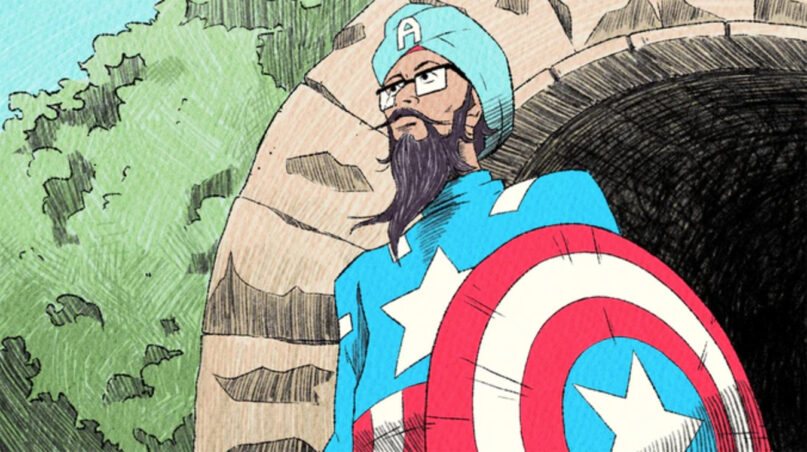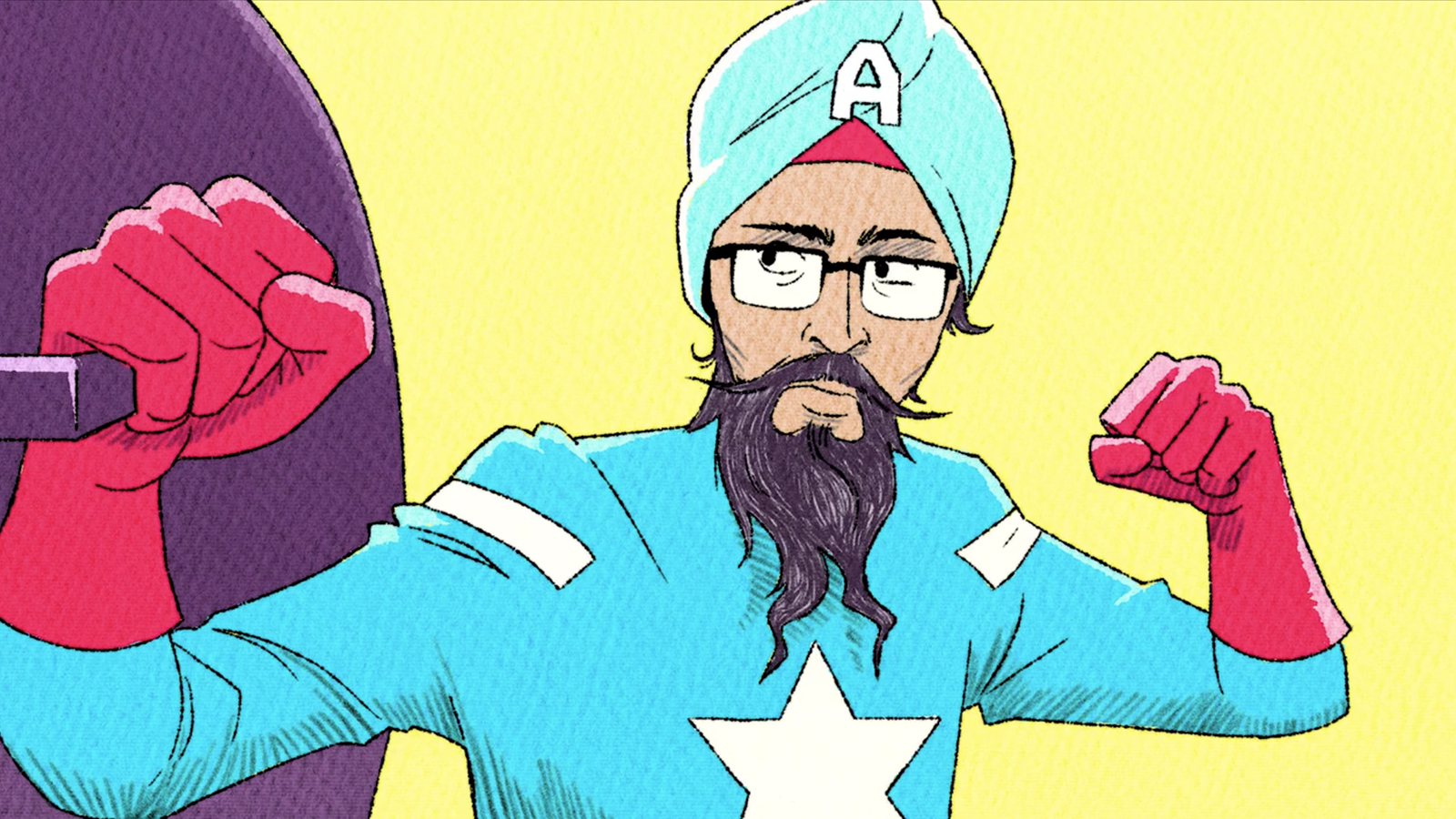Why I am obsessed with an ancient story about giant frogs
Yes, they are a metaphor for the challenges of our time.

(RNS) — If you are Jewish — and, frankly, even if you are not — think about the last time you attended a Passover Seder.
You will recall that moment in the Seder when it’s time to recite the plagues that fell upon the land of Egypt. Many Jews know the list by heart: dam, blood; tzfardea, frogs; kinim, locusts …
So it goes. We recite each plague, and as we do so, we spill a drop of wine on our plates to symbolize the lessening of our joy at the downfall of our enemies.
But wait a moment.
We always translate tzfardea as “frogs,” but that’s not exactly right.
The verse from Exodus that comes right out of our Torah portion for this Shabbat reads as follows: Va-taal ha-tzfardea vatkas et eretz Mitzrayim — literally, “And the frog arose and it covered the whole land of Egypt.”
Should it not have said tzfardayim — frogs — as in many frogs? Isn’t that the way we have always imagined it, and the way we have always pictured it? Wasn’t it a plague of frogs?
No. It was not “frogs,” but “frog.”
Let me bring in an ancient rabbinic interpretation, that is either delightful or monstrous.
“Rabbi Elazar said: At first, it was one frog, and it spawned and filled the entire land of Egypt with frogs.” (Talmud, Sanhedrin 67b).
Let me walk you through how a modern American rabbi interpreted this interpretation — this one frog that produced many frogs.
One of the greatest rabbis in modern American history was Rabbi Israel H. Levinthal.
He was the spiritual leader of the Brooklyn Jewish Center during the 1930s and 1940s. Those were golden times for the Brooklyn Jewish Center. Its majestic building was located on the equally majestic Eastern Parkway. Worshipping at the Brooklyn Jewish Center in those days must have been an awe-inspiring experience, because in the 1940s the cantor happened to be the great opera singer Richard Tucker.
Slightly more than 80 years ago, Rabbi Levinthal preached about how that one frog became many frogs.
These are his words:
No one in America, or in England, except discredited, outlawed charlatans and racketeers, would have dared a few years ago openly to advocate the overthrow of democracy and liberty. They would have dreaded the reaction of public opinion. How shall we explain the sudden appearance in many quarters of men and women, high in social and public life, who would betray the ideals of democracy? Their hatred of democracy and all liberal thought was there before, but it had been repressed, it had been kept hidden; the bearers of the hate feared the shame that would have been heaped upon them … But the one frog appeared, and he croaked his venomous message, and lo and behold, from out of the dark hiding places, they suddenly arose to echo the call that came from that one poisonous throat.
It should be manifestly clear to whom Rabbi Levinthal was referring. The sprouting of many frogs was a metaphor for the sprouting of fascism and Nazism.
If Rabbi Levinthal were alive today, he could have easily been preaching about the potential for tyranny in this country — dangers that historian Timothy Snyder has enumerated in his New York Times bestseller, “On Tyranny: Twenty Lessons From the Twentieth Century.”
Snyder compares the notions of patriotism and nationalism. His words ring true today:
It is not patriotic to try to sabotage an American election, nor to claim victory after defeat. It is not patriotic to try to end democracy. A nationalist might do all these things, but a nationalist is not a patriot … Nationalism is relativist, since the only truth is the resentment we feel when we contemplate others. As the novelist Danilo Kiš put it, nationalism “has no universal values, aesthetic or ethical.” A patriot, by contrast, wants the nation to live up to its ideals, which means asking us to be our best selves.
Democracy failed in Europe in the 1920s, ’30s, and ’40s, and it is failing not only in much of Europe but in many parts of the world today. It is that history and experience that reveals to us the dark range of our possible futures. A nationalist will say that “it can’t happen here,” which is the first step toward disaster. A patriot says that it could happen here, but that we will stop it.
But I find myself turning to yet another interpretation of tzfardea — that one frog.
Rabbi Elazar ben Azarya (not to be confused with the previous Rabbi Elazar) said, “It was one frog; it whistled to the other frogs, and they all came after it.” (Talmud, Sanhedrin 67b)
It was not a large, deafening croak from a gargantuan frog. Rather, it was a simple, quiet whistle. Even, perhaps, a dog whistle.
The hidden frogs have appeared and they have covered all the land. The whistles are clear, and often they do not even appear as dog whistles. I am referring, of course, to the almost daily occurrences of antisemitism in this country.
Antisemitism has gone viral, for it is, in fact, a virus that spreads into the body politic particularly when a society’s immune system has broken down.
What is the response to a virus?
Another kind of virus.
A word that also begins with the letters V-I-R.
A virus of virtue, of personal responsibility, of communal responsibility, and of bearing moral witness.
As of today, COVID-19 is still quite present among us. Almost three years later, it has not receded, though in many cases its severity has diminished. It is as if we have gone from a biological virus to a social virus — Jew-hatred — with not a moment of respite.
During the early days of COVID-19, there was an Israeli popular song, written by the great Chava Alberstein: “Rikma Enoshit Achat,” “One Human Tapestry.”
All of us are one human tapestry,
and if one of us dies, something within all of us dies,
and yet something of each person remains within us.
If only we knew how to calm the hatred…
In Hebrew the word rikma is “tapestry” or “embroidery.”
But rikma is also a word for human tissue.
Spiritually and physically, we are all part of the same human body.
As we approach what would have been the 95th birthday of the Rev. Martin Luther King Jr., let us review these words from his “Letter from Birmingham Jail“:
“We are caught in an inescapable network of mutuality, tied in a single garment of destiny. Whatever affects one directly, affects all indirectly … ”
Because the lessons of history are abundantly clear.
Yes, one frog can produce many frogs.
And, yes: A single frog can whistle, and that whistling will coax the other frogs out of their hiding places.
Please enjoy my new book — the first book to outline what a post-Oct. 7 American Judaism will look like — and how we can restore communal obligation to liberal Jewish life. “Tikkun Ha’Am/ Repairing Our People: Israel and the Crisis of Liberal Judaism.”








